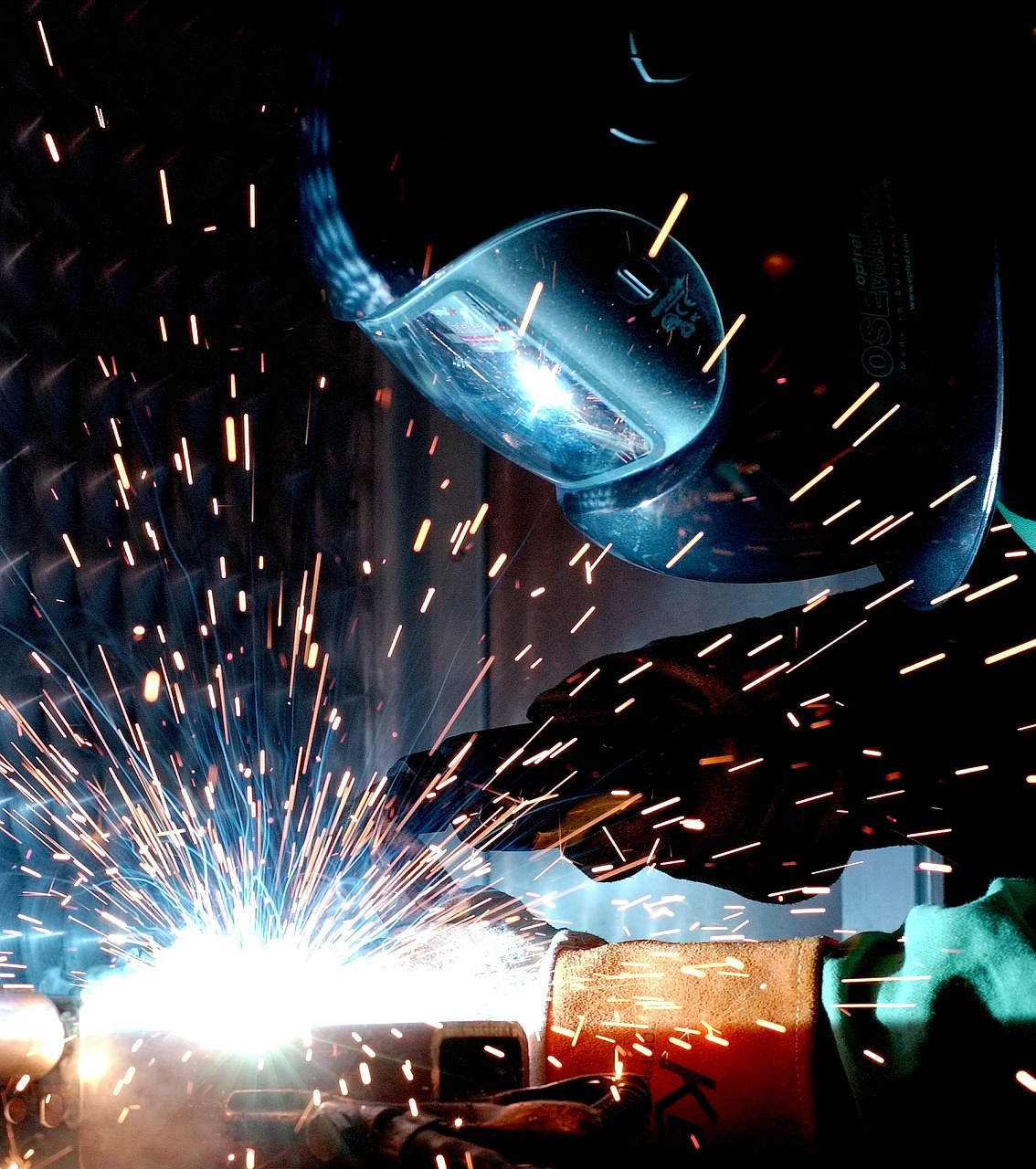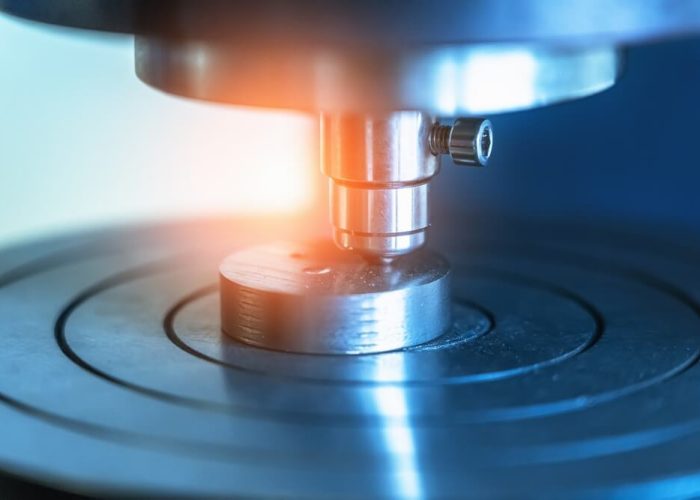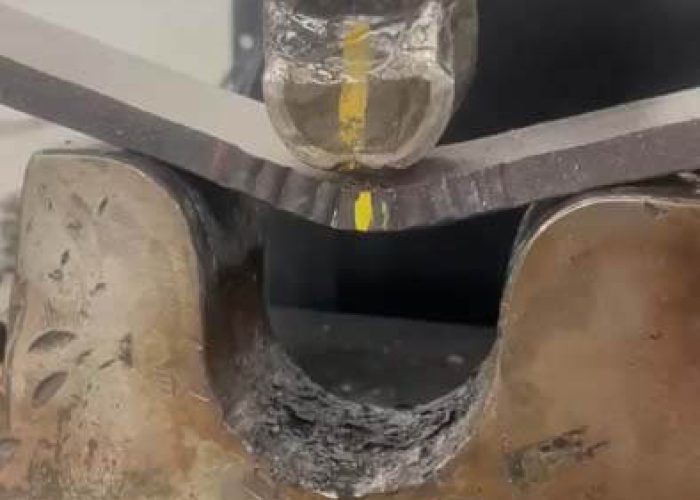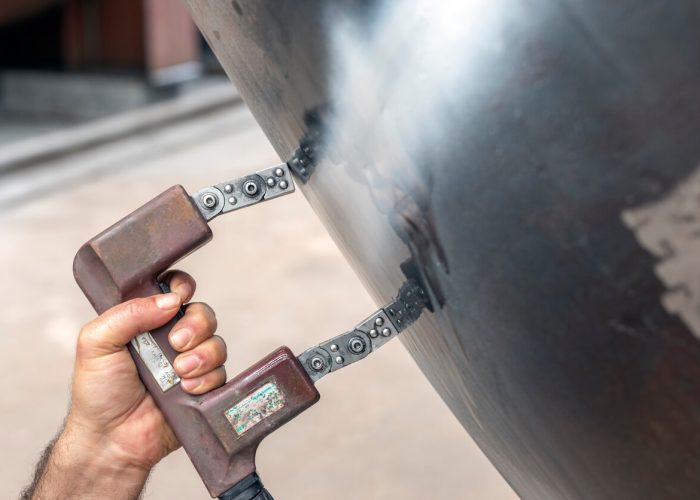Industrial Welding
Industrial welding is a critical process in manufacturing and construction, encompassing various techniques like MIG, TIG, and arc welding. We utilize specialized equipment, including welding machines and automated systems, to join metals with precision and efficiency. Safety is paramount, requiring proper PPE and workspace hazard assessments. The applications span multiple industries, from automotive to aerospace. Skilled professionals undergo rigorous training and certification to meet industry standards. Quality control methods, such as non-destructive testing, guarantee weld integrity. Emerging technologies like robotic welding and AI-powered systems are revolutionizing the field, promising enhanced productivity and accuracy. The future of industrial welding holds exciting advancements.

Key Points
- Industrial welding encompasses various techniques including MIG, TIG, arc, and resistance welding for diverse manufacturing applications.
- Safety protocols, including proper PPE and workspace hazard assessments, are crucial in industrial welding environments.
- Quality control methods like visual inspections and non-destructive testing ensure weld integrity across industries.
- Training and certification programs are essential for developing skilled welding professionals who meet industry standards.
- Emerging technologies such as robotic welding, laser applications, and AI-powered systems are revolutionizing industrial welding practices.
Types of Industrial Welding Techniques
Industrial welding encompasses a diverse range of techniques, each tailored to specific applications and materials. Let’s explore some of the most common types we use in the industry.
MIG welding, a subtype of gas metal arc welding, is versatile and efficient. We rely on it to fuse various alloys, using inert gas to shield the weld. It’s important to guarantee compliance and certification in welding practices to uphold industry standards and safety.
For maintenance work and inexpensive materials, we often turn to gas welding. This method employs fuel gases and oxygen to produce a high-temperature flame ideal for such tasks.
When it comes to repair works and fabricating steel structures, we frequently use arc welding, a fundamental industrial technique.
For high-quality welds and superior finishes on various metals, we opt for TIG welding, a subtype of gas tungsten arc brazing.
In mass production, particularly in automobile manufacturing, we find resistance welding invaluable. This method presses metal pieces between electrodes, creating intense heat for efficient joining.
As welders, we often rely on multi-process welders, which allow us to switch between these techniques seamlessly. This versatility enables us to adapt to different project requirements and materials, ensuring we deliver the best results in our industrial welding endeavors.
Essential Equipment for Industrial Welding
Having explored the various welding techniques, we’ll now focus on the tools that make these processes possible. At the heart of industrial welding operations are welding machines, which come in various types such as MIG, TIG, and stick welders. Each of these machines uses specific gases and electrodes tailored to different welding processes, allowing us to tackle a wide range of projects with precision.
In addition to these machines, weld testing plays an essential role in ensuring the quality of our work. We perform all testing in accordance with pertinent specifications to guarantee the highest standards.
For more advanced metal manipulation, we rely on computerized plasma and laser cutters. These sophisticated manipulators offer unparalleled accuracy in shaping and cutting metal, elevating our capabilities in fabrication and production.
We can’t overlook the importance of welding positioners in our arsenal. These tools are vital for ensuring welder safety, improving weld quality, and speeding up our processes. By helping us position weldments accurately, they contribute significantly to the efficiency of our operations.
As we work with this equipment, we must always adhere to national and local standards. This commitment to quality and safety isn’t just about compliance; it’s about maintaining the structural integrity of our work and safeguarding our team. Together, we’re equipped to handle any industrial welding challenge, from maintenance to mass production.
Safety Protocols in Industrial Welding
In our discussion of industrial welding safety protocols, we must first address the critical role of Personal Protective Equipment (PPE).
We’ll then examine the importance of conducting thorough workspace hazard assessments to identify and mitigate potential risks.
Personal Protective Equipment (PPE)
When it comes to safety in industrial welding, Personal Protective Equipment (PPE) plays a vital role. We must prioritize our well-being by using a variety of protective gear designed specifically for welding operations.
Welding helmets are a key component of our PPE arsenal, featuring auto-darkening filters that adapt to varying light levels. These helmets guarantee we maintain clear vision while shielding our eyes from harmful radiation.
We can’t overlook the significance of safety glasses with UV protection, which guard against intense light and flying debris.
Our hands require protection too, and heat-resistant gloves are essential for thermal safety during welding tasks.
To safeguard our bodies, we rely on welding jackets made from flame-resistant materials, effectively reducing the risk of burns and injuries from sparks and molten metal.
Workspace Hazard Assessment
We must explore the critical process of workspace hazard assessment for industrial welding operations. As a community of welding professionals, it’s our responsibility to safeguard the safety of our colleagues and workspaces. A thorough workspace hazard assessment is the foundation of our safety protocols, allowing us to identify and mitigate potential risks before they become dangerous.
When conducting a workspace hazard assessment, we need to focus on several key areas. First, we’ll evaluate the ventilation systems to protect ourselves from harmful welding fumes and gases.
We’ll also assess fire prevention measures, guaranteeing that fire-resistant materials are in place and fire extinguishing equipment is readily available. Additionally, we’ll examine our personal protective equipment, including welding helmets, gloves, and clothing, to confirm they’re in good condition and appropriate for the tasks at hand.
Proper Equipment Maintenance
Having established a thorough workspace hazard assessment, our focus now shifts to proper equipment maintenance—a cornerstone of safety protocols in industrial welding. We must prioritize regular welding maintenance to ensure peak performance and extend the lifespan of our machinery.
By adhering to manufacturer’s guidelines for maintenance schedules and procedures, we notably reduce the risk of equipment failure and create a safer working environment for our team.
Let’s implement a proactive maintenance plan that increases productivity, minimizes downtime, and enhances our overall operational efficiency. This approach not only leads to consistent weld quality but also reduces the likelihood of costly repairs or replacements.
We’re all in this together, and by following proper maintenance protocols, we’re safeguarding our collective well-being and the success of our projects.
Applications Across Various Industries
Across the spectrum of modern industry, industrial welding plays a key role in fabrication, maintenance, and repair processes. We find welding applications in diverse sectors, including construction, automotive, aerospace, shipbuilding, and oil and gas. Our collective reliance on this vital skill ensures the integrity, strength, and durability of industrial structures and equipment.
In the construction industry, we utilize welding techniques to fabricate structural steel, forming the backbone of our buildings and infrastructure. The automotive sector depends on welding for manufacturing vehicle components, while aerospace engineers employ specialized welding methods for crafting aircraft and spacecraft parts. Maintaining structural integrity is essential in these industries, and services such as metallurgical testing and weld procedure development play a significant role in maintaining high standards.
In shipbuilding, we join massive steel plates to create seaworthy vessels, and in the oil and gas industry, we maintain and repair pipelines essential for energy distribution.
The versatility of industrial welding is evident in its ability to join various materials:
- Steel
- Aluminum
- Stainless steel
- Titanium
As members of the industrial community, we recognize the high demand for skilled welders across these sectors. Their expertise in applying welding techniques to different materials and environments is vital for maintaining our industrial operations and advancing technological progress.
Training and Certification Requirements
In light of the demanding nature of industrial welding, thorough training and certification programs are essential for developing skilled professionals. We offer in-depth welding training that covers basic techniques, advanced processes, and specialized skills in pipe and structural welding. Our programs also emphasize inspection and quality control, ensuring well-rounded expertise.
We understand the diverse needs of our students, so we provide flexible scheduling options, including full-time, part-time, evening, and weekend classes. For those already in the workforce, we offer customized and accelerated courses to accommodate busy schedules.
Our training aligns with industry standards, preparing students for AWS certification and adhering to NCCER accreditation requirements. We prioritize safety, ensuring compliance with OSHA standards throughout our curriculum.
To support our students’ career goals, we offer extensive job placement assistance, including career counseling, resume workshops, and networking opportunities. Our state-of-the-art facilities feature modern welding labs equipped with cutting-edge technology, providing hands-on experience in realistic work environments.
Quality Control and Inspection Methods
Quality control and inspection methods form the foundation of ensuring weld integrity in industrial applications. We depend on a combination of visual inspections and advanced non-destructive testing techniques to assess the quality of welded joints. These methods allow us to detect defects and safeguard the strength and reliability of welded structures across various industries.
As welding professionals, we utilize several inspection methods, including:
- Ultrasonic testing: Using sound waves to detect internal flaws
- Radiographic testing: Employing X-rays or gamma rays to identify hidden defects
- Magnetic particle testing: Revealing surface and near-surface discontinuities
Our quality control practices are vital for maintaining safety standards and meeting industry requirements. We rely on certified welding inspectors who’ve undergone rigorous training and certification processes, such as those offered by the American Welding Society (AWS). These experts possess the knowledge and skills necessary to evaluate welds according to stringent industry standards.
Emerging Technologies in Industrial Welding
We’re witnessing a technological revolution in industrial welding with advancements in robotic systems, laser applications, and AI-powered solutions.
Robotic welding has evolved to incorporate adaptive control and machine learning, enhancing precision and consistency in complex welding tasks.
Laser welding technology now enables high-speed, high-quality welds in various materials, while AI-powered welding systems optimize parameters in real-time, reducing defects and improving overall weld quality.
Robotic Welding Advancements
Throughout industrial welding, robotic advancements have revolutionized the field, offering unprecedented levels of efficiency and precision. We’ve witnessed the integration of automated systems that not only increase productivity but also guarantee consistent accuracy in complex welding tasks. These robotic welding systems have notably reduced human error, leading to higher quality welds and improved safety for our workforce.
The latest developments in robotic welding technology include:
- Real-time monitoring capabilities
- Adaptive control features for top-notch weld quality
- AI and machine learning integration for continuous improvement
We’re seeing a paradigm shift in industrial welding as these emerging technologies enable us to achieve higher throughput and substantial cost savings. The incorporation of artificial intelligence and machine learning algorithms allows our robotic welding systems to continuously learn and adapt, enhancing their performance over time.
As we embrace these advancements, we’re not only improving our welding processes but also creating a safer work environment for our team members. By leveraging robotic welding technology, we’re positioning ourselves at the forefront of industrial welding innovation, ensuring our competitive edge in the global market.
Laser Welding Applications
While robotic welding has transformed industrial processes, laser welding technology has emerged as another game-changing innovation in the field. We’ve witnessed laser welding revolutionize high-precision manufacturing, offering unparalleled accuracy and efficiency in joining metals.
In our industry, we’re increasingly turning to laser welding for its ability to handle delicate and thin materials with minimal heat-affected zones. This technique has become indispensable in automotive, aerospace, and electronics manufacturing, where precision is paramount. We’re achieving faster processing speeds, narrower weld seams, and reduced distortion, allowing us to tackle intricate and small-scale applications with confidence.
The level of control we now have over the welding process is remarkable. We’re producing high-quality welds that require minimal post-welding cleanup, streamlining our production processes.
As advancements in laser technology continue, we’re witnessing laser welding’s growing popularity across various industrial applications. Its efficiency, accuracy, and versatility are transforming how we approach complex welding tasks. By embracing laser welding, we’re staying at the forefront of industrial welding technology, ensuring our competitiveness in an ever-evolving manufacturing landscape.
AI-Powered Welding Systems
The integration of artificial intelligence into welding systems represents a considerable leap forward in industrial welding technology. AI-powered welding systems are revolutionizing our industry by optimizing welding parameters, improving quality, and enhancing overall efficiency. These advanced systems utilize machine learning algorithms to analyze real-time data from sensors, making continuous adjustments to ensure consistent weld quality across various materials and conditions.
We’re witnessing a transformative shift in our welding processes, with AI technology offering:
- Predictive maintenance capabilities
- Automated defect detection
- Enhanced weld monitoring
By implementing AI-powered welding systems, we’re reducing human error and notably increasing productivity. The ability to adapt to different welding conditions and materials allows us to achieve best results consistently. As we embrace this cutting-edge technology, we’re positioning ourselves at the forefront of industrial welding innovation.
The integration of AI in our welding processes isn’t just about improving efficiency; it’s about redefining the standards of quality and precision in our industry.
Together, we’re shaping the future of industrial welding, creating stronger, more reliable welds that meet the demanding requirements of modern manufacturing and construction.
Frequently Asked Questions
What Is Industrial Welding?
We use industrial welding to join metal components in manufacturing and construction. It’s our way of fabricating and maintaining essential infrastructure. We employ techniques like MIG, TIG, and arc welding, adhering to strict quality and safety standards.
What Type of Welding Pays the Most?
Let’s explore which welding type pays the most. We’ve found that pipe welding and underwater welding typically offer the highest wages. They’re in high demand in industries like oil and gas, requiring specialized skills we can develop together.
What Are the 3 Main Types of Welding in the Industry?
Let’s explore the three primary welding types we use in our industry: MIG, TIG, and Stick welding. We’ll find that each has its own unique characteristics and applications, enabling us to tackle various fabrication challenges efficiently.
What Is the Hardest Welding to Do?
We’d consider underwater welding one of the hardest types. It’s incredibly demanding due to the harsh environment, safety risks, and specialized equipment required. Welding exotic materials like titanium and high-strength steel also presents significant challenges for us welders.
Takeaway
We’ve examined the colossal world of industrial welding, from its myriad techniques to cutting-edge technologies. The precision required is astronomical, with tolerances measured in microns. Safety protocols are so stringent, they’d make a nuclear facility blush. As we’ve seen, welding isn’t just joining metals; it’s an art form that quite literally holds our infrastructure together. The future of welding is blindingly bright, with innovations that’ll make today’s methods look positively prehistoric.



